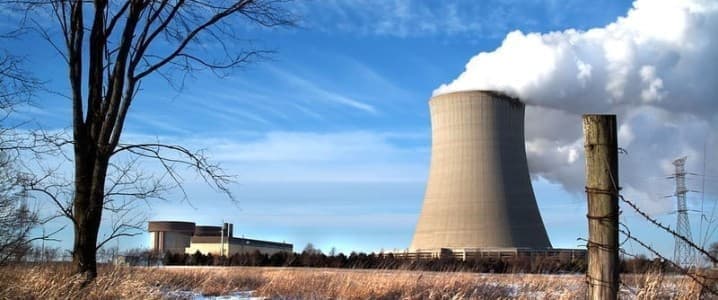
The United States government has announced a significant investment in nuclear energy, committing at least $80 billion to revitalize its nuclear power capabilities. This initiative involves a strategic partnership with Westinghouse Electric Company and Cameco Corporation, aimed at constructing large-scale nuclear power plants across the country. The agreement, formalized through a binding term sheet with the U.S. Department of Commerce, is expected to expedite the deployment of Westinghouse’s nuclear reactor technologies both domestically and internationally.
This partnership not only seeks to enhance the nuclear power industrial base in the United States but also aims to reinvigorate supply chains affected in recent years. Following the acquisition of Westinghouse by Brookfield Asset Management and Cameco in November 2023, the U.S. government will gain a participation interest, allowing it to receive 20% of cash distributions exceeding US$17.5 billion from Westinghouse. For this interest to vest, the government must finalize investment decisions and enter into binding agreements for the construction of new reactors valued at a minimum of $80 billion.
Nuclear Power’s Role in Meeting Energy Demands
Each two-unit Westinghouse AP1000 project is projected to create or sustain approximately 45,000 manufacturing and engineering jobs across 43 states, while a broader national deployment could generate over 100,000 construction jobs. “The program will cement the United States as one of the world’s nuclear energy powerhouses and increase exports of Westinghouse’s nuclear power generation technology globally,” stated Westinghouse.
Connor Teskey, President of Brookfield Asset Management, emphasized the importance of this collaboration, indicating that it will help unlock the potential of nuclear energy to support the growth of artificial intelligence in the U.S. Additionally, the partnership aligns with President Trump’s vision, articulated in a May 2025 executive order, that nuclear energy, alongside domestic fossil fuel production, can reduce America’s reliance on foreign energy sources.
The U.S. nuclear sector is experiencing a resurgence, with several key agreements solidifying this trend. In the past year, Constellation Energy entered into its largest power purchase agreement with Microsoft, facilitating the restart of the Three Mile Island Unit 1 nuclear plant. Furthermore, Constellation signed a 20-year agreement with Meta for energy from the Clinton Clean Energy Center in Illinois, and Talen Energy is set to provide carbon-free energy from its Susquehanna nuclear power plant to Amazon Web Services data centers.
Future of Nuclear Energy and AI Demand
The recent surge in agreements indicates a robust interest from major tech companies in securing energy from operational and restarted nuclear facilities. Notably, leaders in the technology sector are also investing in the next-generation of nuclear technology, specifically small modular reactors (SMRs), which are believed to be simpler and more cost-effective to construct.
Experts at the Goldman Sachs Global Institute project a substantial increase in global data center power demand, anticipating a 165% rise by 2030 and a total capacity of around 137 GW. This increase will necessitate new generation capacity, a gap that nuclear energy can help fill, particularly as companies seek sustainable solutions while addressing the intermittency challenges of renewable sources like wind and solar.
Despite the current optimism, the U.S. nuclear industry has faced challenges in recent decades, with domestic capacity and supply chains deteriorating as countries like China and Russia have taken leading roles in global nuclear investment. The last two reactors built in the U.S. at Georgia’s Plant Vogtle experienced significant delays and cost overruns, ultimately costing over $35 billion, more than double initial projections.
As the U.S. approaches a critical juncture where many reactor licenses will expire in the 2030s, this strategic partnership could play a pivotal role in addressing the energy demands driven by advancements in artificial intelligence. The Goldman Sachs Global Institute notes that success in revitalizing the nuclear industry will depend on building the necessary infrastructure and partnerships, supported by appropriate capital solutions.
The announcement represents a decisive step toward meeting future energy demands while positioning the U.S. as a leader in nuclear technology and energy security.







